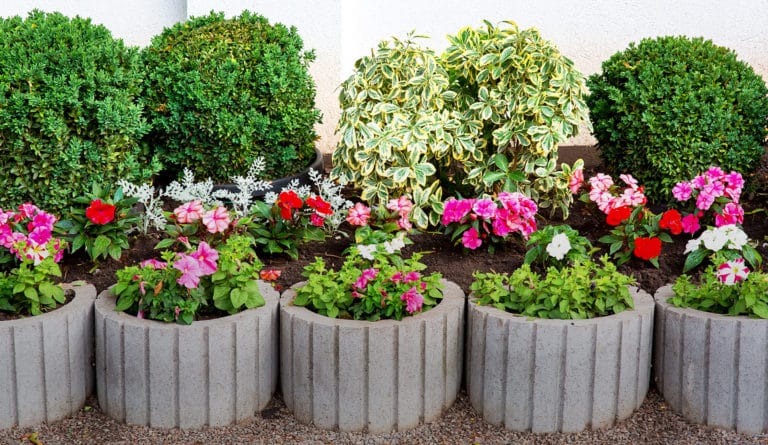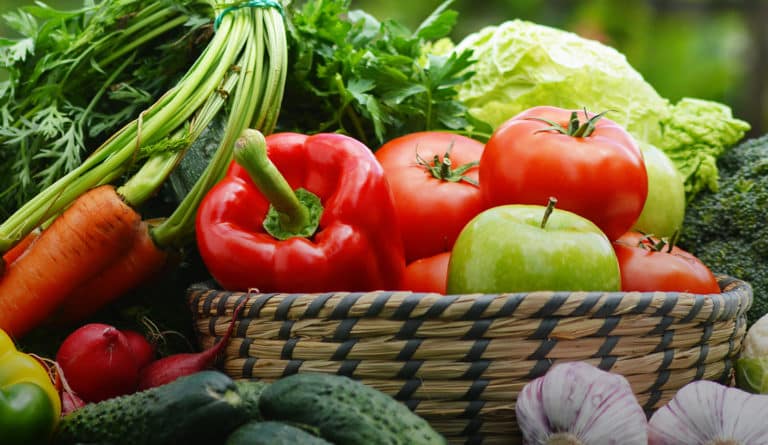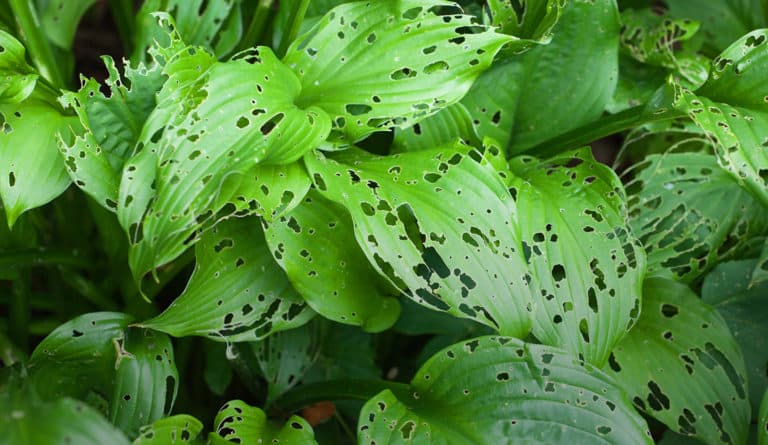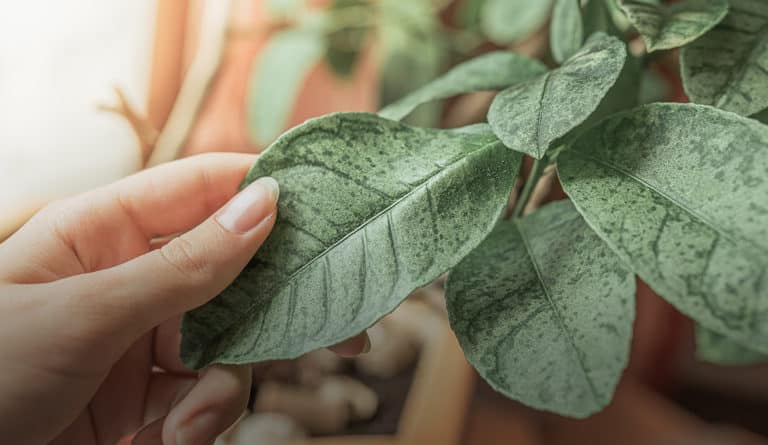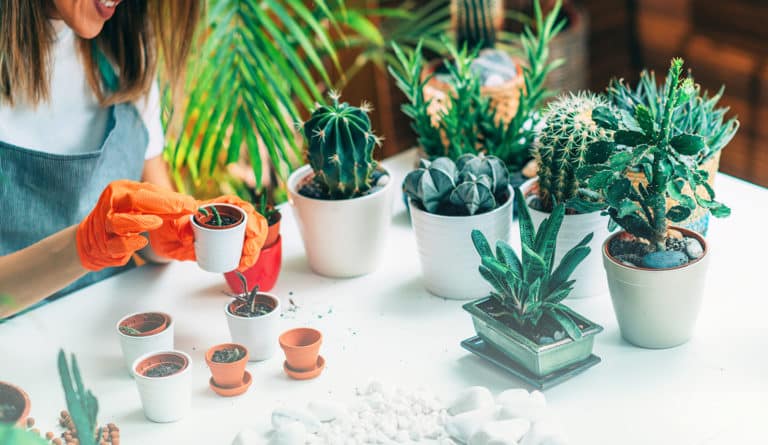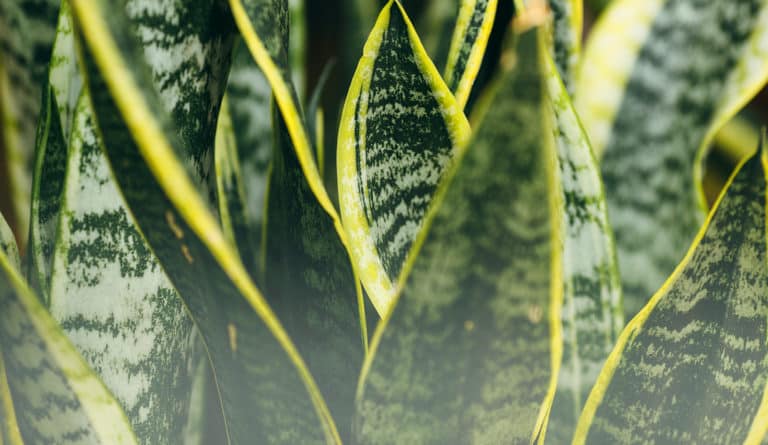
strawberries
aka Fragaria × Ananassa
Forget those grocery store imposters! Your garden-grown strawberries will remind you how delicious a berry can be. Some like a little sprinkle of sugar but we think they’re perfect as-is.
variations
Three major varieties of strawberries: June-bearing, ever-bearing, and day-neutral strawberries, each with a different time and duration of fruiting.
light
full sun
These sun-loving plants will happily take 6 to 10 hours. They’re okay in shadier spots, but don’t expect as many berries (aka the entire point of strawberry plants).
water + feeding
average needs
Natural rainfall is often enough. But keep an eye on the weather. If it’s hot and dry, water about 1 inch per week (about 30 minutes total sprinkler time). Water more when the plant is establishing. It has shallow roots that need encouragement.
toxic
non-toxic
Safe and delicious, for humans and pampered pets alike.
size
small-ish
Smaller Strawberry plants grow to about 6 to 8 inches tall, and about 1 ft wide.
pro tip
snip, don’t pluck
Plucking the fruit can damage the delicate plant. Use a little pair of scissors to snip the stems just above the fruit.
fun fact
teeny seeds
The average strawberry has 200 extremely tiny seeds. Could they be any more cute!?
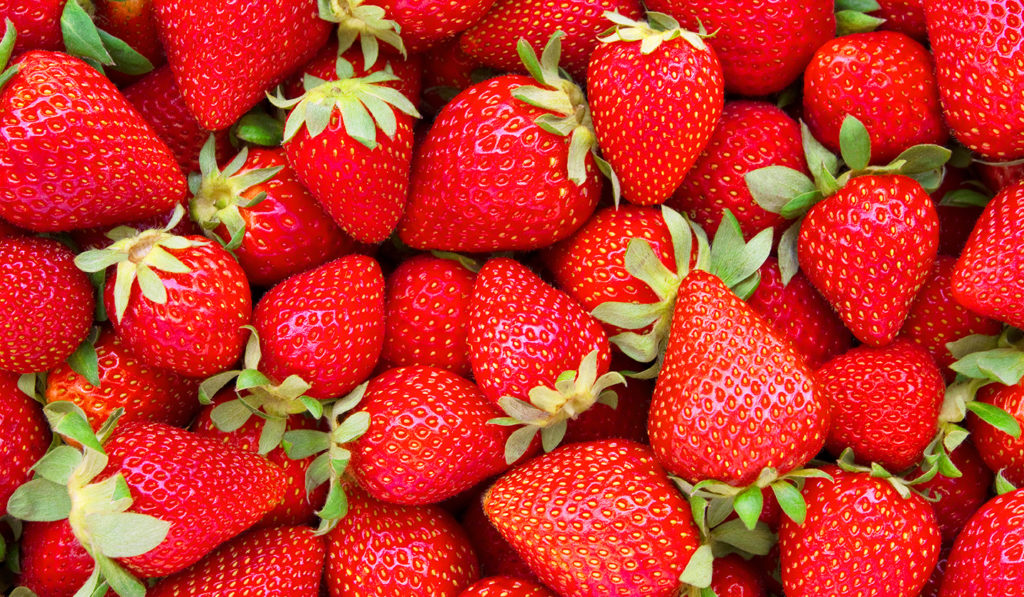
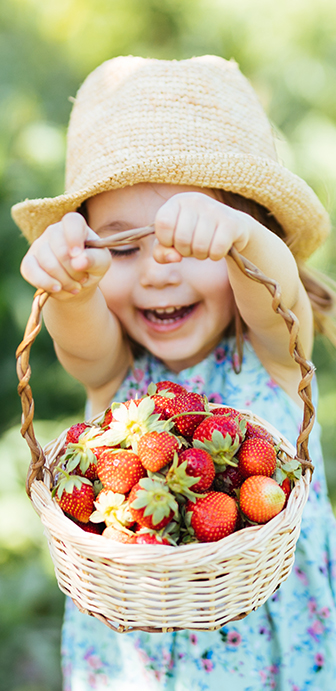
beyond the basics
-
soil & potting
Strawberries can handle a range soil types, but loamy well-draining soil is best. If your soil is clay dominant, consider mixing in compost or peat moss.
-
companion planting
Crop rotation tip: avoid planting strawberries where you recently planted eggplants, pepper, tomatoes or even other strawberries. Beneficial herbs to plant around Strawberries include Garlic, Mint, Sage and Thyme. Beneficial veggies include beans, lettuce, onions and spinach. For flowers, marigolds add a pop of colour and are great at repelling slugs and other insect pests.
-
harvesting
Once you see flowers, the countdown is on! Usually 4 to 6 weeks ‘til harvest time. Pick the plant regularly, as often as every 3 days.
-
pest control
Keep free of nutrient-stealing weeds. A gritty mulch or some sand on top of the soil will deter slugs.
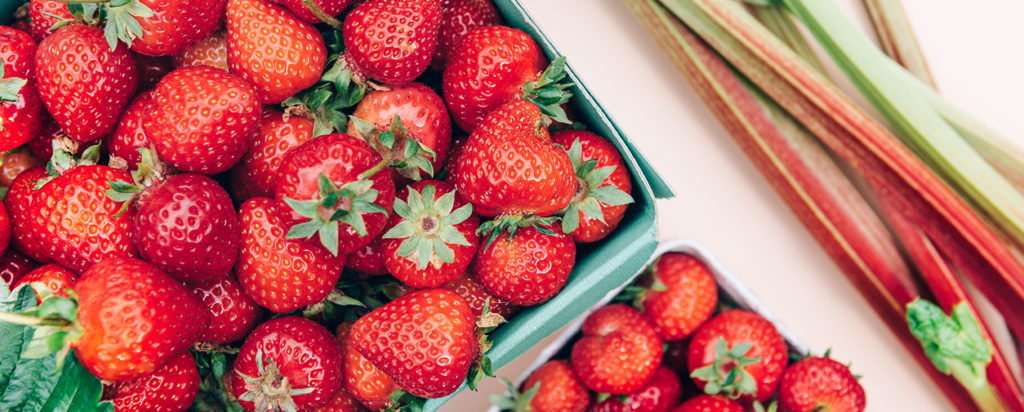
troubleshooting
-
why are my plant’s leaves turning brown?
Likely not enough water. They’re trying to give you those juicy berries right at the start of summer. It’s best to water in the morning or late evening, when the hot sun can’t bake it away.
-
turning yellow or dying?
Probably poor soil conditions. Potted Strawberry plants from a grocery store or department store often come in poor quality soil. To give your strawberry plant the nutrients it’s craving, transplant to soil enriched with compost, or go with a new vegetable soil mix.
If your plant is in a garden bed that hasn’t been replenished with fertilizer or plant food, they may also be starved for nutrients. Supplement with plant food such as Miracle-Gro® Organics Plant Food.
-
why aren’t my strawberry plants producing fruit?
Too much heat and not enough water. If the late Spring is hot and dry, and Summer’s looking like more of the same, it’s time to increase watering. Hydrated plants give you more berries. Try 1 inch per week (about 30 minutes total sprinkler time).
-
what’s causing these black, purple, or red spots on the leaves?
Some pests also love eating strawberry plants, namely aphids, mites, slugs, and weevils. Check the leaves. All these little monsters can be handled with a vegetable-safe pesticide.
Another cause could be common leaf spot. These fungal spots range in colour from dark red to dark purple, to black. It’s carried on the wind from other plants and is spread most easily through watering and periods of rain. This is usually just a cosmetic issue. You can remove badly infected leaves, and water at soil level to help slow the spread.
-
why are my plants scraggly or ‘leggy’?
If your seedlings are growing up leggy, it’s usually the basics. Water and light. They want bright light for 6 to 10 hours a day, and plenty of watering when they’re starting out.

strawberries
aka Fragaria × Ananassa
Forget those grocery store imposters! Your garden-grown strawberries will remind you how delicious a berry can be. Some like a little sprinkle of sugar but we think they’re perfect as-is.
variations
Three major varieties of strawberries: June-bearing, ever-bearing, and day-neutral strawberries, each with a different time and duration of fruiting.
light
full sun
These sun-loving plants will happily take 6 to 10 hours. They’re okay in shadier spots, but don’t expect as many berries (aka the entire point of strawberry plants).
water + feeding
average needs
Natural rainfall is often enough. But keep an eye on the weather. If it’s hot and dry, water about 1 inch per week (about 30 minutes total sprinkler time). Water more when the plant is establishing. It has shallow roots that need encouragement.
toxic
non-toxic
Safe and delicious, for humans and pampered pets alike.
size
small-ish
Smaller Strawberry plants grow to about 6 to 8 inches tall, and about 1 ft wide.
pro tip
snip, don’t pluck
Plucking the fruit can damage the delicate plant. Use a little pair of scissors to snip the stems just above the fruit.
fun fact
teeny seeds
The average strawberry has 200 extremely tiny seeds. Could they be any more cute!?
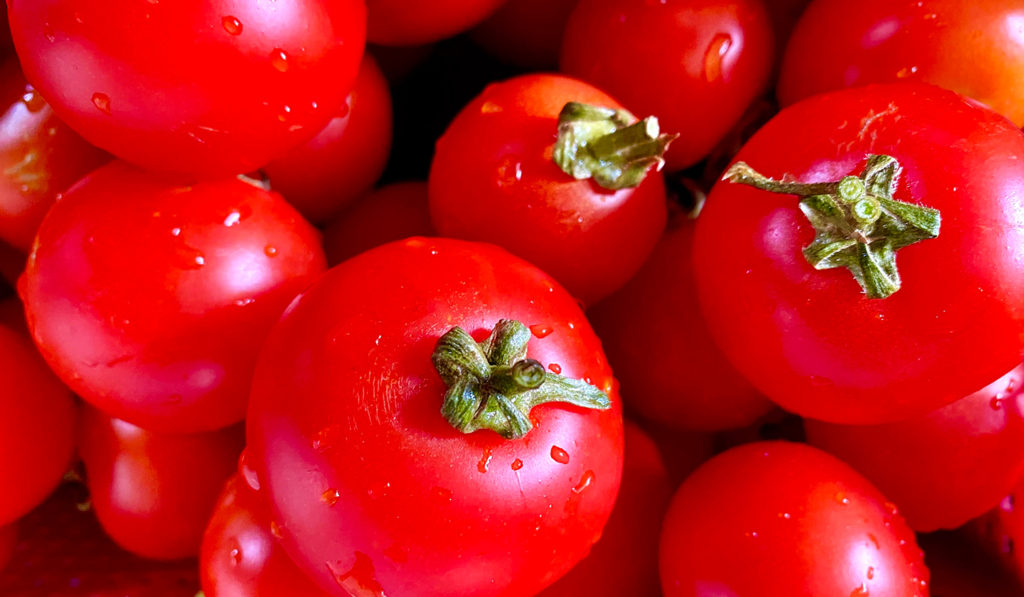

beyond the basics
-
soil & potting
Strawberries can handle a range soil types, but loamy well-draining soil is best. If your soil is clay dominant, consider mixing in compost or peat moss.
-
companion planting
Crop rotation tip: avoid planting strawberries where you recently planted eggplants, pepper, tomatoes or even other strawberries. Beneficial herbs to plant around Strawberries include Garlic, Mint, Sage and Thyme. Beneficial veggies include beans, lettuce, onions and spinach. For flowers, marigolds add a pop of colour and are great at repelling slugs and other insect pests.
-
harvesting
Once you see flowers, the countdown is on! Usually 4 to 6 weeks ‘til harvest time. Pick the plant regularly, as often as every 3 days.
-
pest control
Keep free of nutrient-stealing weeds. A gritty mulch or some sand on top of the soil will deter slugs.
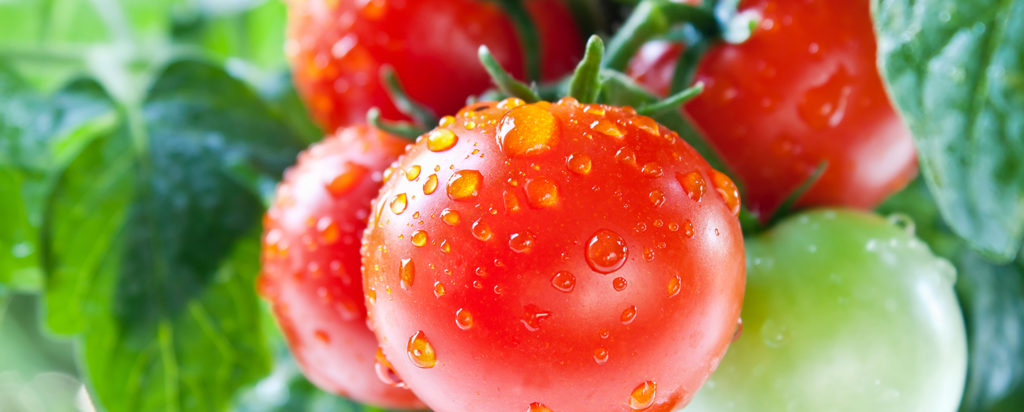
troubleshooting
-
why are my plant’s leaves turning brown?
Likely not enough water. They’re trying to give you those juicy berries right at the start of summer. It’s best to water in the morning or late evening, when the hot sun can’t bake it away.
-
turning yellow or dying?
Probably poor soil conditions. Potted Strawberry plants from a grocery store or department store often come in poor quality soil. To give your strawberry plant the nutrients it’s craving, transplant to soil enriched with compost, or go with a new vegetable soil mix.
If your plant is in a garden bed that hasn’t been replenished with fertilizer or plant food, they may also be starved for nutrients. Supplement with plant food such as Miracle-Gro® Organics Plant Food.
-
why aren’t my strawberry plants producing fruit?
Too much heat and not enough water. If the late Spring is hot and dry, and Summer’s looking like more of the same, it’s time to increase watering. Hydrated plants give you more berries. Try 1 inch per week (about 30 minutes total sprinkler time).
-
what’s causing these black, purple, or red spots on the leaves?
Some pests also love eating strawberry plants, namely aphids, mites, slugs, and weevils. Check the leaves. All these little monsters can be handled with a vegetable-safe pesticide.
Another cause could be common leaf spot. These fungal spots range in colour from dark red to dark purple, to black. It’s carried on the wind from other plants and is spread most easily through watering and periods of rain. This is usually just a cosmetic issue. You can remove badly infected leaves, and water at soil level to help slow the spread.
-
why are my plants scraggly or ‘leggy’?
If your seedlings are growing up leggy, it’s usually the basics. Water and light. They want bright light for 6 to 10 hours a day, and plenty of watering when they’re starting out.

strawberries
aka Fragaria × Ananassa
Forget those grocery store imposters! Your garden-grown strawberries will remind you how delicious a berry can be. Some like a little sprinkle of sugar but we think they’re perfect as-is.
variations
Three major varieties of strawberries: June-bearing, ever-bearing, and day-neutral strawberries, each with a different time and duration of fruiting.
light
full sun
These sun-loving plants will happily take 6 to 10 hours. They’re okay in shadier spots, but don’t expect as many berries (aka the entire point of strawberry plants).
water + feeding
average needs
Natural rainfall is often enough. But keep an eye on the weather. If it’s hot and dry, water about 1 inch per week (about 30 minutes total sprinkler time). Water more when the plant is establishing. It has shallow roots that need encouragement.
toxic
non-toxic
Safe and delicious, for humans and pampered pets alike.
size
small-ish
Smaller Strawberry plants grow to about 6 to 8 inches tall, and about 1 ft wide.
pro tip
snip, don’t pluck
Plucking the fruit can damage the delicate plant. Use a little pair of scissors to snip the stems just above the fruit.
fun fact
teeny seeds
The average strawberry has 200 extremely tiny seeds. Could they be any more cute!?
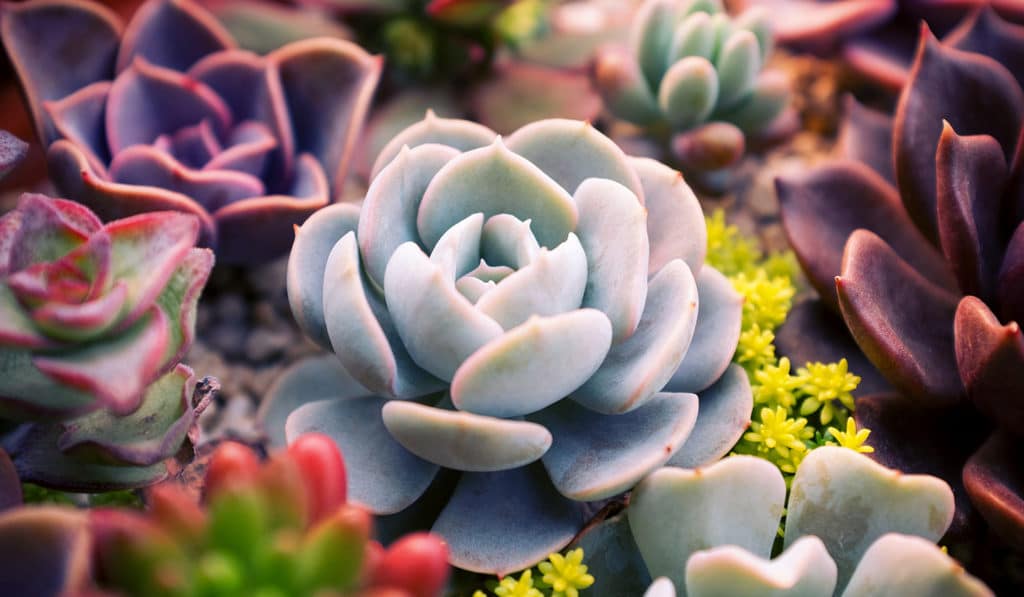
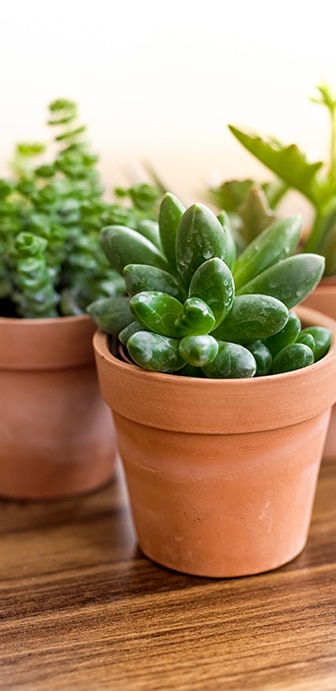
beyond the basics
-
soil & potting
These desert dwellers prefer a light, well-draining potting soil like Miracle-Gro Cactus, Palm and Succulent Potting Mix. Or, use regular potting soil and add some potting sand or perlite. A layer of sand on the top will help prevent rot. Ensure the pot has good drainage and aloe should never sit in water. Empty drainage trays if you see water collecting.
-
when to repot
Repot every 1 to 2 years in the Spring, especially with younger plants. Increase pot diameter by 2 inches every time. Want them to stay cute and little? You can stunt the growth by root trimming. In later years you can replace the top couple inches of soil instead of completely repotting.
-
propagation
Making new succulent plant babies is easy. In fact many propagate on their own. You will notice little mini versions starting grow. These “pups” can be gently separated potted as a new plant. If you’re not getting pups, remove a leaf, let it dry for a couple of days and place it on some moist soil. It should sprout roots, and voila! You have an ultra mini plant.
-
pest control
Succulents don’t typically suffer from pests, but they can sometimes get bugs. Gnats are most likely. Inspect those juicy little leaves regularly. Check out our Pest control section in Plant 101 for how to identify and deal with pests on your plant!
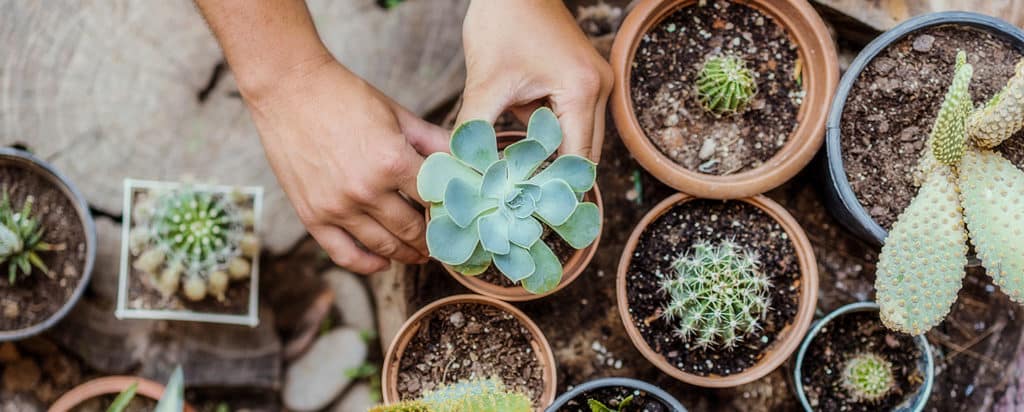
troubleshooting
-
why are the eaves turning brown, red or reddish brown?
A couple of possibilities. Maybe too much direct summer sun. Or possibly overwatering or root damage. First, moving your plant to a still-bright but less sun-blasted spot. Reduce the watering and follow our watering instructions above. If your succulent buddy still doesn’t bounce back, check for root damage.
-
what’s causing these dark spots? brown or mushy leaves?
Almost certainly too much water. This problem is no big deal if you catch it early. First, stop watering! Let’s dry out that soil. Check your pot’s drainage. Does it have a hole that allows excess water to escape? Help things dry by poking holes in the soil. This will get oxygen to the roots. You can also put the pot (with drainage holes) in a tray that’s lined with a layer of dry soil. It acts like a sponge to draw out extra moisture. Now, let’s check for root rot. Dig down and cut out any that look affected. If things are really bad, consider repotting entirely with new soil. Moving forward, water only when the soil is totally dry and make sure you water the soil, not the leaves. Water can collect between the leaves at its base, and start to rot. A thin layer of sand on top of the soil can reduce pooling water up top.
For more information check out our Plant 101 section.
-
pale or yellowing leaves?
Not enough light and/or overwatering. If the whole plant has yellowed or gone pale, it definitely needs more light. Move your friend to a brighter spot and resist the urge to overwater. Let the top two inches of soil get dry before watering again.
-
ew, what’s with the shrunken, wrinkled leaves?
Your plant needs a drink. Underwatering a succulent is hard to do, but it does happen. Give small amounts of water for three days in a row. Make sure you do this at soil level, not poured on the leaves. This is the ONE TIME it’s okay to do a little misting. A little does a lot. Resist the urge to water all at once! Your friend will plump up in a few days.
-
why isn’t my succulent growing?
Not enough light. It takes a lot of bright (mostly indirect) light to get succulents growing. If you’re not noticing any growth, or the new growth looks pale, it’s time to move to brighter spot. You may need slightly more frequent watering after the move. Note, succulents grow in slow motion at the best of times, so a little patience goes a long way.

strawberries
aka Fragaria × Ananassa
Forget those grocery store imposters! Your garden-grown strawberries will remind you how delicious a berry can be. Some like a little sprinkle of sugar but we think they’re perfect as-is.
variations
Three major varieties of strawberries: June-bearing, ever-bearing, and day-neutral strawberries, each with a different time and duration of fruiting.
light
full sun
These sun-loving plants will happily take 6 to 10 hours. They’re okay in shadier spots, but don’t expect as many berries (aka the entire point of strawberry plants).
water + feeding
average needs
Natural rainfall is often enough. But keep an eye on the weather. If it’s hot and dry, water about 1 inch per week (about 30 minutes total sprinkler time). Water more when the plant is establishing. It has shallow roots that need encouragement.
toxic
non-toxic
Safe and delicious, for humans and pampered pets alike.
size
small-ish
Smaller Strawberry plants grow to about 6 to 8 inches tall, and about 1 ft wide.
pro tip
snip, don’t pluck
Plucking the fruit can damage the delicate plant. Use a little pair of scissors to snip the stems just above the fruit.
fun fact
teeny seeds
The average strawberry has 200 extremely tiny seeds. Could they be any more cute!?
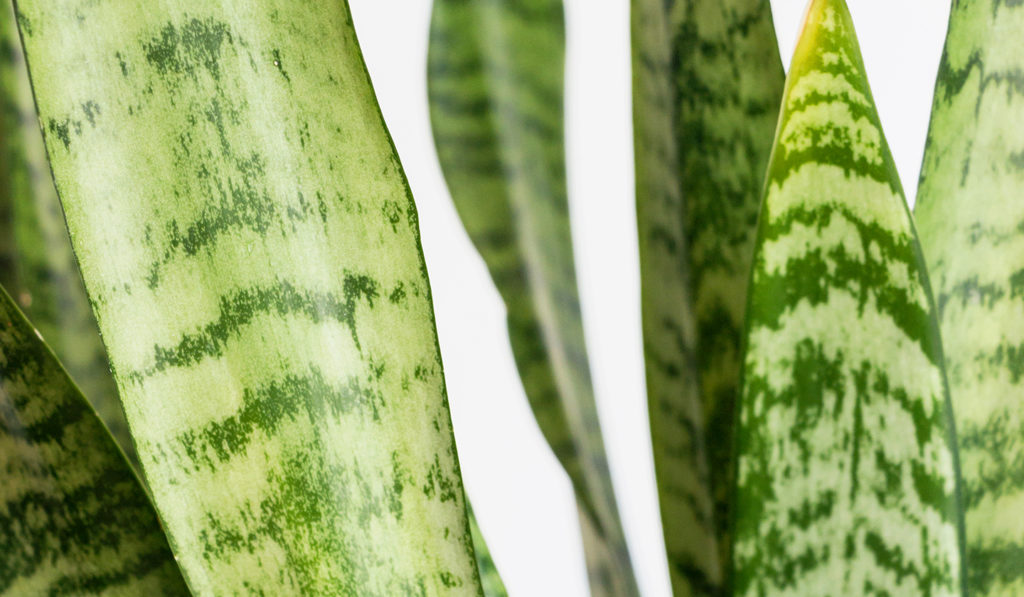
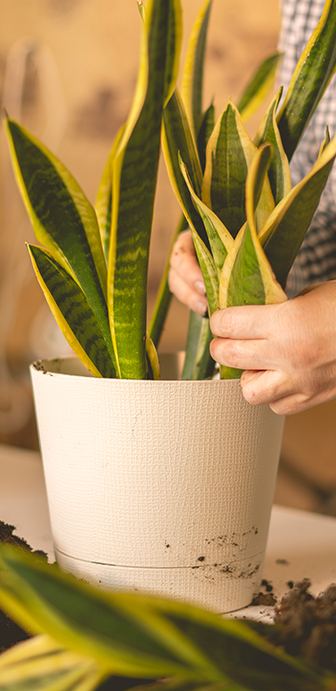
beyond the basics
-
soil & potting
It’s a desert plant, so use a light, well-draining potting soil like Miracle-Gro Cactus, Palm and Succulent Potting Mix. Or, use regular potting soil and add some potting sand or perlite. A layer of sand on the top will help prevent rot. Ensure the pot has good drainage. Snakes should never sit in water. Empty drainage trays if you see water collecting.
-
when to repot
Every 2 to 3 years in the Spring, especially in the earlier years. Increase the pot size by 2 inches each repotting. In later years you can replace the top couple inches of soil instead of completely repotting. Snake growing too fast? Slow the growth by trimming the roots.
-
propagation
Grab a sharp knife or scissors, find one of the healthiest leaves, and cut it off at the base of the plant. Then cut the leaf into multiple horizontal strips (about 3 inches each). Let the ends dry for two days then put them in water to stimulate root growth. This step could take 2 to 3 weeks. When you’ve got roots, you’re ready to pot.
-
pest control
Mealybugs are most common. When you do your regular dusting, inspect the leaves. Check out our Pest control section in Plant 101 for how to identify and deal with pests on your plant!
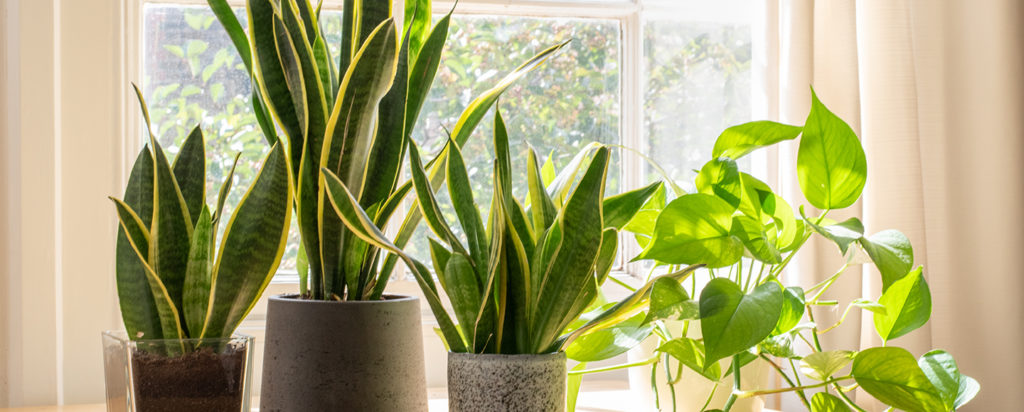
troubleshooting
-
why are the leaves falling sideways?
Multiple possibilities. All easily fixed. Firstly, this may not be a problem at all. Overly mature leaves naturally fall away to make room new growth. But if many leaves are falling over before their time, it’s probably over or under watering. If the soil is bone dry, add a moderate amount of water for a few days in a row. Then be more diligent with your watering routine. If the soil is soaked, check your drainage and let the soil fully dry before starting a better routine. Light issues: Snake plants do well in low light but if they’re getting no light leaves may start to keel over. Move into some nice, bright, indirect light. Other causes? Maybe your Snake plant has outgrown its pot. This can cause it to become root-bound. It’s time to repot in something at least 2 inches wider.
-
why do I have yellowing leaves?
Probably overwatering. Are the leaves also a bit mushy? These are signs of root rot. Not to worry, when caught early this is easily fixable. Reduce watering and ensure the soil dries out before watering. Check your pot’s drainage. Does it have a hole that allows excess water to escape? Help things dry by poking holes in the soil. This will get oxygen to the roots. You can also put the pot (with drainage holes) in a tray that’s lined with a layer of dry soil. It acts like a sponge to draw out extra moisture. Now, let’s check for root rot. Dig down and cut out any that look affected. If things are really bad, consider repotting entirely with new soil. For more information check out our Plant 101 section.
-
why does this snake have wrinkled leaves?
Under-watering. Check the soil. It’s probably bone dry. Instead of dousing it all at once. Give your Snake plant a medium amount of water three days in a row. Nice and easy. Make sure it’s never sitting in pools of water. Those droopy leaves should rebound by day three.

strawberries
aka Fragaria × Ananassa
Forget those grocery store imposters! Your garden-grown strawberries will remind you how delicious a berry can be. Some like a little sprinkle of sugar but we think they’re perfect as-is.
variations
Three major varieties of strawberries: June-bearing, ever-bearing, and day-neutral strawberries, each with a different time and duration of fruiting.
light
full sun
These sun-loving plants will happily take 6 to 10 hours. They’re okay in shadier spots, but don’t expect as many berries (aka the entire point of strawberry plants).
water + feeding
average needs
Natural rainfall is often enough. But keep an eye on the weather. If it’s hot and dry, water about 1 inch per week (about 30 minutes total sprinkler time). Water more when the plant is establishing. It has shallow roots that need encouragement.
toxic
non-toxic
Safe and delicious, for humans and pampered pets alike.
size
small-ish
Smaller Strawberry plants grow to about 6 to 8 inches tall, and about 1 ft wide.
pro tip
snip, don’t pluck
Plucking the fruit can damage the delicate plant. Use a little pair of scissors to snip the stems just above the fruit.
fun fact
teeny seeds
The average strawberry has 200 extremely tiny seeds. Could they be any more cute!?
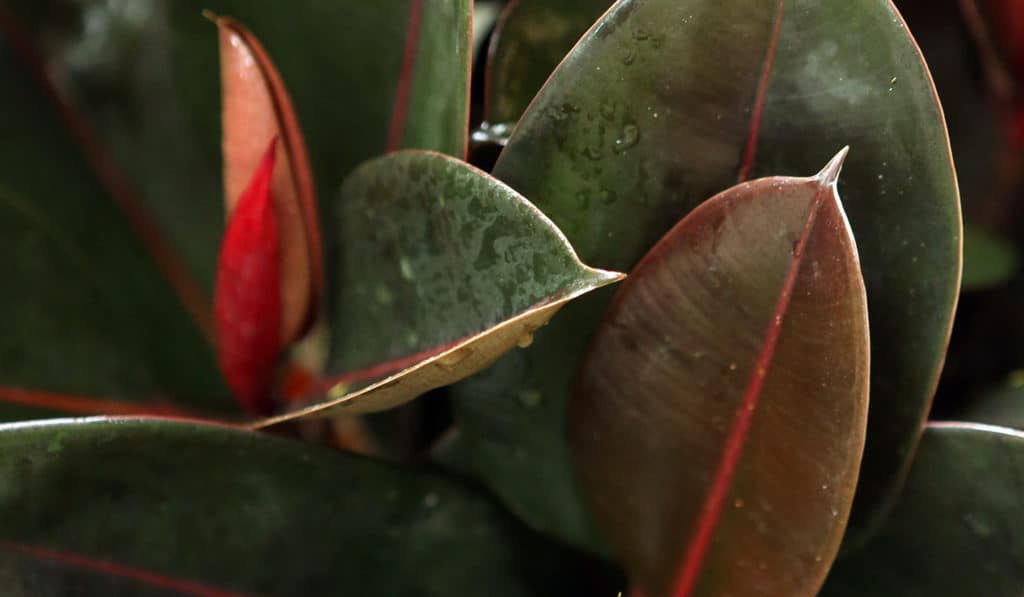
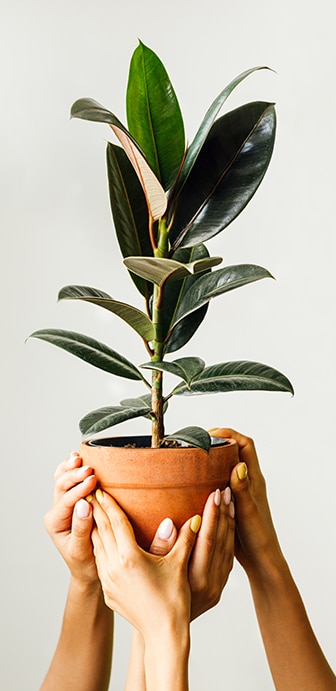
beyond the basics
-
soil & potting
Use a rich, well-draining, indoor potting soil, like Miracle-Gro® Indoor Potting Mix. Ensure your pot has good drainage. Don’t let it sit in water and if you notice water pooling in the drainage tray, empty it.
-
when to repot
Repot every 1 to 2 years in the Spring, especially with younger plants. Increase pot by 2 inches every time. When your Rubber plant is older and becomes a big fella, repotting gets hard! So you can just replace the top few inches of soil.
-
propagation
Be careful what you start, because these plants get big! Pick a stem showing thick, healthy leaves and cut halfway up the stem. Milky sap will come out, and it’s an irritant you want to avoid. Remove the bottom leaves to give yourself a nice stretch of stem. It’s not the easiest propagator, so you’ll need rooting hormone to encourage roots. Dip your stem in the hormone and pot it moist soil, like Miracle-Gro® Indoor Potting Mix.
-
pest control
Look for mealybugs, scale insects, and spider mites. During your regular leaf cleaning, inspect the underside of each leaf. Check out our Pest control section in Plant 101 for how to identify and deal with pests on your plant!
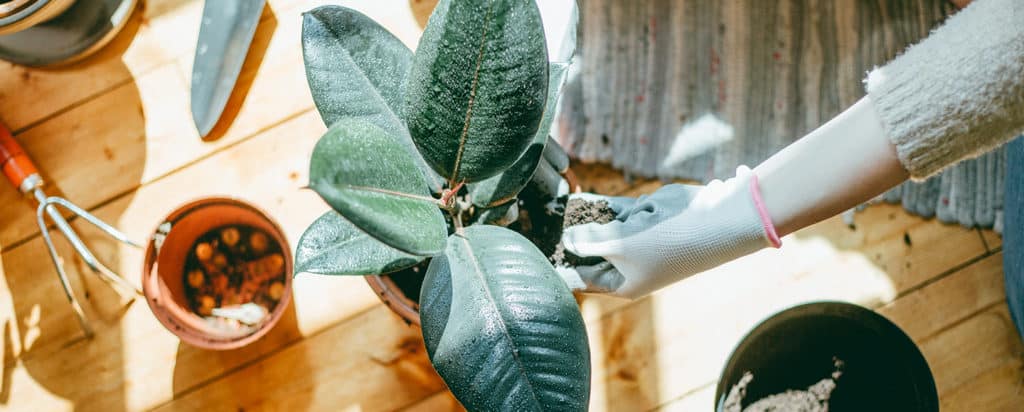
troubleshooting
-
why are there patchy, pale spots on leaves?
Too much direct sunlight. Rubber plants don’t like direct sun. It’s too hot on those big, broad leave, and they’ll lose moisture, causing these patchy pale spots. Shade the window or move your plant away from this direct sun. Sadly, the spots don’t heal, so consider removing the most damaged ones.
-
what’s with all the dropping leaves?
Rubber plants get stressed out easily. Any sudden change is likely to trigger leaf drop. Blasts of air conditioning or furnace heat. Cold drafts under a door. Being taken home from the nursery is also a big change in your plant’s life! Expect droppage. If you have not moved it recently and you can’t source any sudden temp changes then it could be overly dry air, or under watering and feeding. Review your care routine and your Rubber plant should… bounce back.
-
why are there dark Patches or spots on leaves?
Possible sunburn, or worse, leaf spot. If your Rubber plant is sitting in direct sunlight, it’s probably sunburn. Especially if it’s getting hot Summer sun. Move to still-bright indirect spot. If it’s not sunburn, it could be leaf spot, a fungal disease. Overwatering, especially in the winter, is usually the cause. First, avoid spreading to other plants by separating them physically. Remove all spotty leaves and check for plant debris in the pot. If you’re misting, stop. You want the leaves to get dry. Treat with fungicide.
-
why do I have yellowing, wilting leaves?
Probably root rot from overwatering. Do you also notice mushy stems and/or slower growth? These are all signs of root rot. Not to worry, when caught early this is easily fixable. Reduce watering and ensure the soil dries out before watering. Check your pot’s drainage. Does it have a hole that allows excess water to escape? Help things dry by poking holes in the soil. This will get oxygen to the roots. You can also put the pot (with drainage holes) in a tray that’s lined with a layer of dry soil. It acts like a sponge to draw out extra moisture. Now, let’s check for root rot. Dig down and cut out any that look affected. If things are really bad, consider repotting entirely with new soil. For more information check out our Plant 101 section.

strawberries
aka Fragaria × Ananassa
Forget those grocery store imposters! Your garden-grown strawberries will remind you how delicious a berry can be. Some like a little sprinkle of sugar but we think they’re perfect as-is.
variations
Three major varieties of strawberries: June-bearing, ever-bearing, and day-neutral strawberries, each with a different time and duration of fruiting.
light
full sun
These sun-loving plants will happily take 6 to 10 hours. They’re okay in shadier spots, but don’t expect as many berries (aka the entire point of strawberry plants).
water + feeding
average needs
Natural rainfall is often enough. But keep an eye on the weather. If it’s hot and dry, water about 1 inch per week (about 30 minutes total sprinkler time). Water more when the plant is establishing. It has shallow roots that need encouragement.
toxic
non-toxic
Safe and delicious, for humans and pampered pets alike.
size
small-ish
Smaller Strawberry plants grow to about 6 to 8 inches tall, and about 1 ft wide.
pro tip
snip, don’t pluck
Plucking the fruit can damage the delicate plant. Use a little pair of scissors to snip the stems just above the fruit.
fun fact
teeny seeds
The average strawberry has 200 extremely tiny seeds. Could they be any more cute!?
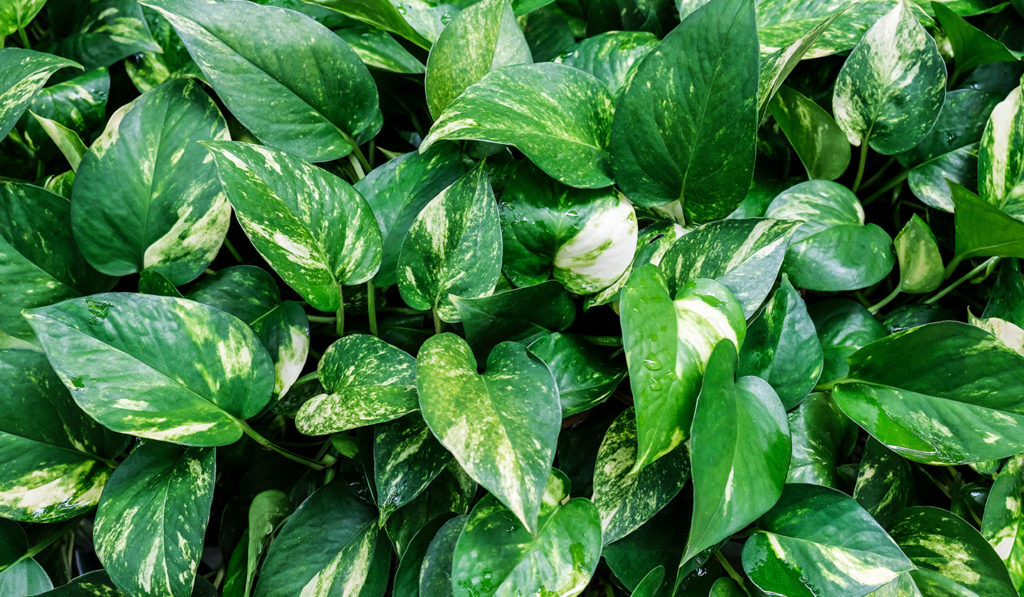

beyond the basics
-
soil & potting
Strawberries can handle a range soil types, but loamy well-draining soil is best. If your soil is clay dominant, consider mixing in compost or peat moss.
-
companion planting
Crop rotation tip: avoid planting strawberries where you recently planted eggplants, pepper, tomatoes or even other strawberries. Beneficial herbs to plant around Strawberries include Garlic, Mint, Sage and Thyme. Beneficial veggies include beans, lettuce, onions and spinach. For flowers, marigolds add a pop of colour and are great at repelling slugs and other insect pests.
-
harvesting
Once you see flowers, the countdown is on! Usually 4 to 6 weeks ‘til harvest time. Pick the plant regularly, as often as every 3 days.
-
pest control
Keep free of nutrient-stealing weeds. A gritty mulch or some sand on top of the soil will deter slugs.
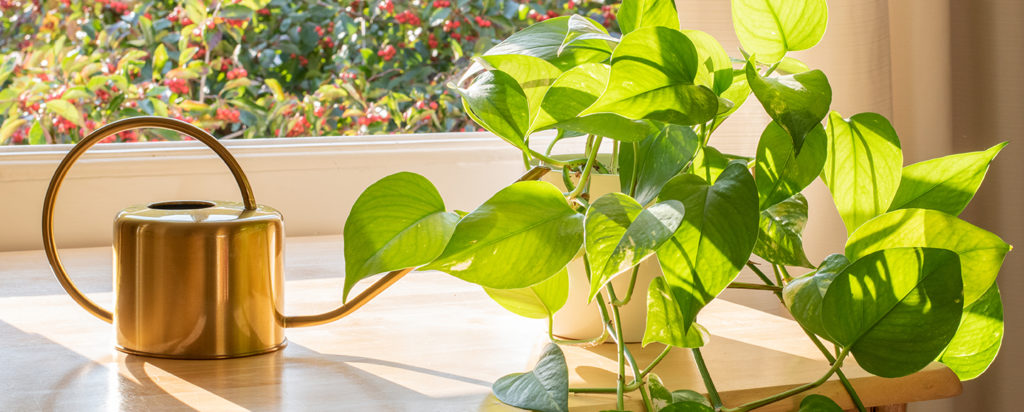
troubleshooting
-
why are my plant’s leaves turning brown?
Likely not enough water. They’re trying to give you those juicy berries right at the start of summer. It’s best to water in the morning or late evening, when the hot sun can’t bake it away.
-
turning yellow or dying?
Probably poor soil conditions. Potted Strawberry plants from a grocery store or department store often come in poor quality soil. To give your strawberry plant the nutrients it’s craving, transplant to soil enriched with compost, or go with a new vegetable soil mix.
If your plant is in a garden bed that hasn’t been replenished with fertilizer or plant food, they may also be starved for nutrients. Supplement with plant food such as Miracle-Gro® Organics Plant Food.
-
why aren’t my strawberry plants producing fruit?
Too much heat and not enough water. If the late Spring is hot and dry, and Summer’s looking like more of the same, it’s time to increase watering. Hydrated plants give you more berries. Try 1 inch per week (about 30 minutes total sprinkler time).
-
what’s causing these black, purple, or red spots on the leaves?
Some pests also love eating strawberry plants, namely aphids, mites, slugs, and weevils. Check the leaves. All these little monsters can be handled with a vegetable-safe pesticide.
Another cause could be common leaf spot. These fungal spots range in colour from dark red to dark purple, to black. It’s carried on the wind from other plants and is spread most easily through watering and periods of rain. This is usually just a cosmetic issue. You can remove badly infected leaves, and water at soil level to help slow the spread.
-
why are my plants scraggly or ‘leggy’?
If your seedlings are growing up leggy, it’s usually the basics. Water and light. They want bright light for 6 to 10 hours a day, and plenty of watering when they’re starting out.

strawberries
aka Fragaria × Ananassa
Forget those grocery store imposters! Your garden-grown strawberries will remind you how delicious a berry can be. Some like a little sprinkle of sugar but we think they’re perfect as-is.
variations
Three major varieties of strawberries: June-bearing, ever-bearing, and day-neutral strawberries, each with a different time and duration of fruiting.
light
full sun
These sun-loving plants will happily take 6 to 10 hours. They’re okay in shadier spots, but don’t expect as many berries (aka the entire point of strawberry plants).
water + feeding
average needs
Natural rainfall is often enough. But keep an eye on the weather. If it’s hot and dry, water about 1 inch per week (about 30 minutes total sprinkler time). Water more when the plant is establishing. It has shallow roots that need encouragement.
toxic
non-toxic
Safe and delicious, for humans and pampered pets alike.
size
small-ish
Smaller Strawberry plants grow to about 6 to 8 inches tall, and about 1 ft wide.
pro tip
snip, don’t pluck
Plucking the fruit can damage the delicate plant. Use a little pair of scissors to snip the stems just above the fruit.
fun fact
teeny seeds
The average strawberry has 200 extremely tiny seeds. Could they be any more cute!?
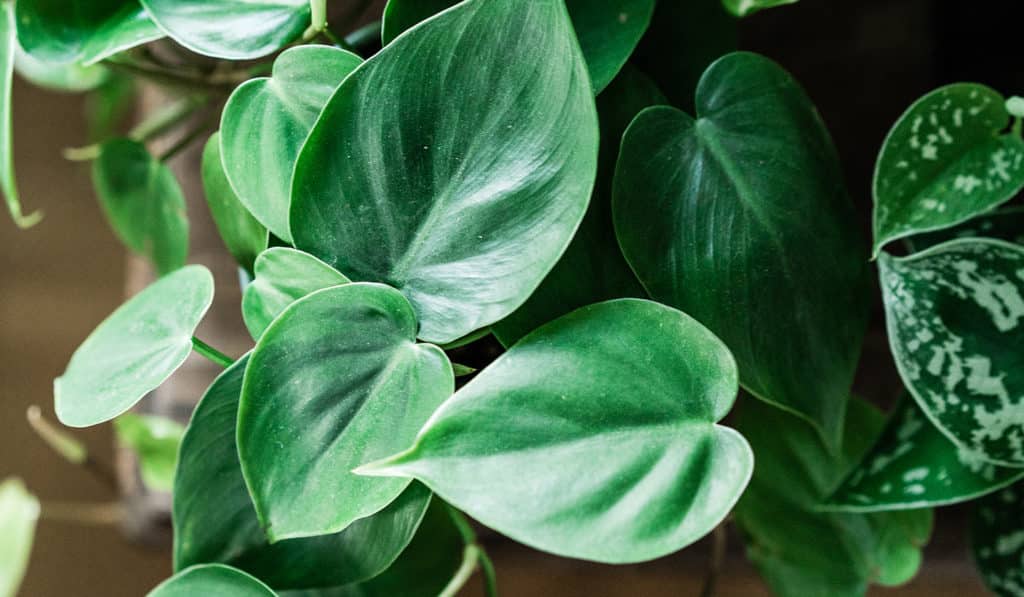
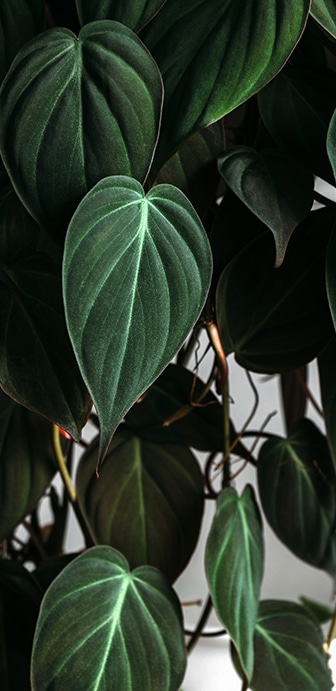
beyond the basics
-
soil & potting
Use a rich, well-draining, indoor potting soil, like Miracle-Gro® Indoor Potting Mix. Ensure your pot has good drainage. If you notice water pooling in the drainage tray, empty it.
-
when to repot
Repot every 2 years in the spring, especially with younger plants. Increase pot by 2 inches every time. If dealing with a more mature, fully grown plant you can just replace the top few inches of soil.
-
propogation
If you have a node or aerial root this plant is very easy to propagate. Cut just below the node and remove the lower leaves. Put in water and watch the roots grow in just a few short weeks! For more information on propagation check out our propagation project page!
-
pest control
Prone to mealybugs. Check the underside of leaves regularly when cleaning. Check out our Pest control section in Plant 101 for how to identify and deal with pests on your plant!
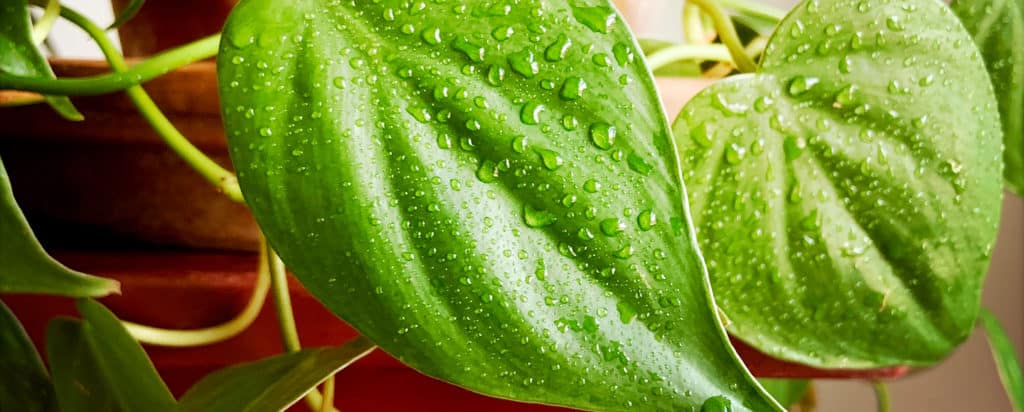
troubleshooting
-
yellowing lower leaves?
Low temperatures or drafts are probably the cause. Try moving your plant to a new location where it is clear of any drafts. Philodendrons like it warm, between 60 and 75 F (16 and 24C) It could also be underwatering or under fertilizing. Ensure you’re watering regularly when the top inch of soil becomes dry.
-
leaves dropping?
Probably a cold draft. Move to warm location that’s clear of any drafty windows or the air conditioning vent. It’s a hardy plant but still likes temps between 60 and 75 F (16 and 24C)
-
brown edges on the leaves?
Various. The soil could be too dry. Water regularly when the top inch of soil gets dry. Water until the soil is moist, but not soggy. If the air feels dry and the temp is over 75F (24C,) mist the leaves regularly. Consider a humidifier, or put the pot on a pebble-filled tray of water (making sure the pot is not touching the water). Philodendrons don’t like cold drafts, so this could also be the problem. Move away from cold windows or AC vents.
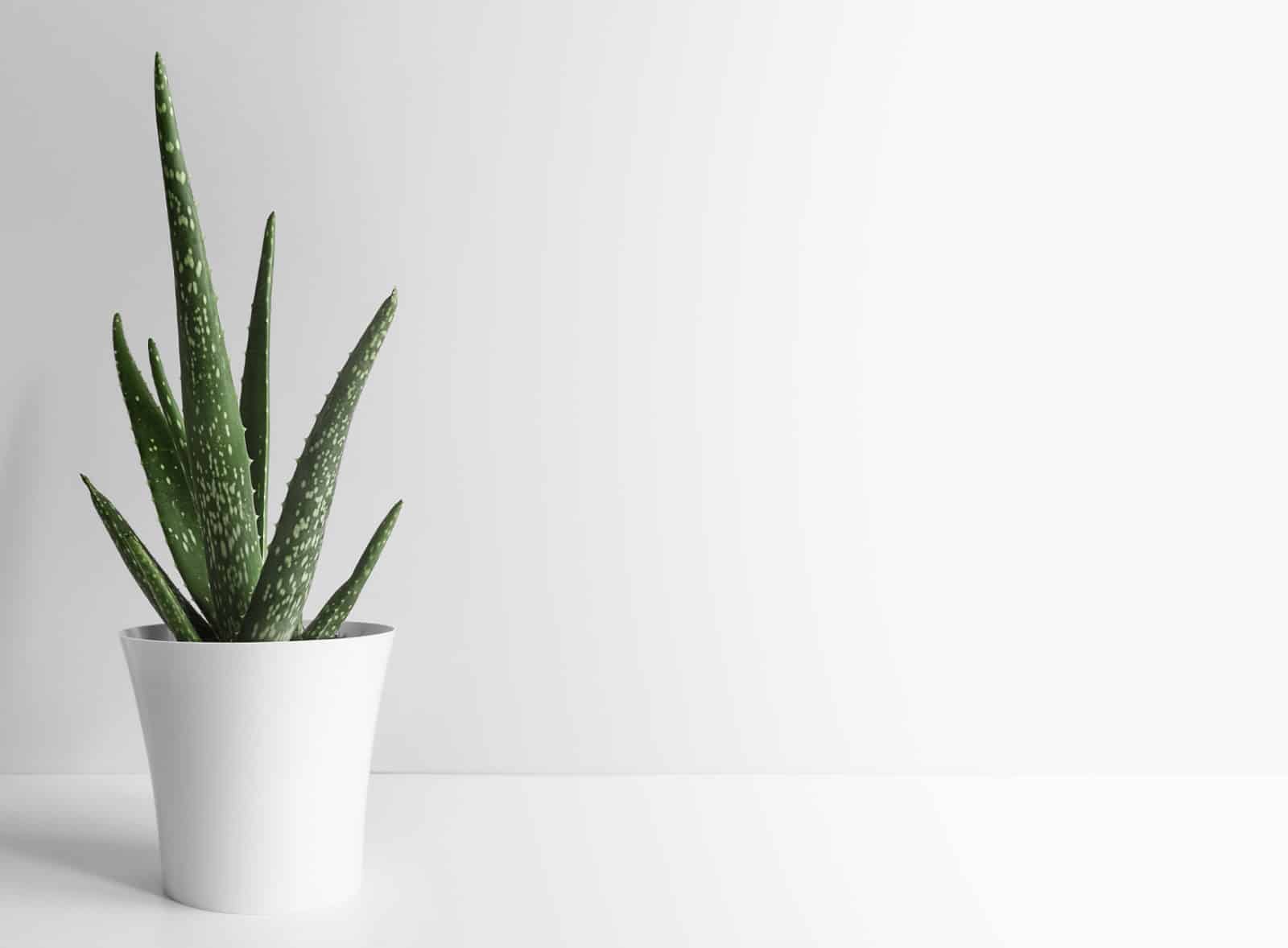
aloe vera
aka aloe barbadensis
Say “Ola” to this easy to grow succulent. Often touted as a “miracle” plant for its skin soothing gel, but the real miracle is how cute they look. An all-around great plant for rookies and exerts alike. Description: easy to grow succulent / soothes burns and skin irritations / southeast Arabian Peninsula / tropical
variations
Aloe Vera has a whopping 250 varieties. So many wonderful little differences to mix and match.
light
bright, indirect light
Find a spot with plenty of indirect light, and ideally a few hours of direct light.
water + feeding
allow to mostly dry out between watering
The top inch should be dry before watering again. Don’t overwater! It’s a desert plant. Feed once in spring, and once in summer.
toxic
safe on skin post likely toxic to ingest
Aloe gel is safe and soothing on the skin. You can even eat some varieties, but note! Most can cause indigestion, vomiting and airway irritation if eaten. Unless you’re 100% sure, keep away from kids and pets.
location
adaptable
Comfy with average indoor temperatures. Prefers things on the warmer side and doesn’t like drafts.
humidity
not an issue
Appreciates an occasional misting to control dust. Humidity levels aren’t a concern for this hearty little fella.
size
small to medium
Usually bought small and can to about 2 feet.
pro tip
water at soil level
Aloe doesn’t like water pooling in the creases between its leaves. That can cause leaf rot.
fun fact
it’s a super soother
Those thick, juicy leaves contain a soothing green gel that can be applied directly to burns (especially sun burns) and bug bites. External use only! It’s toxic to ingest.
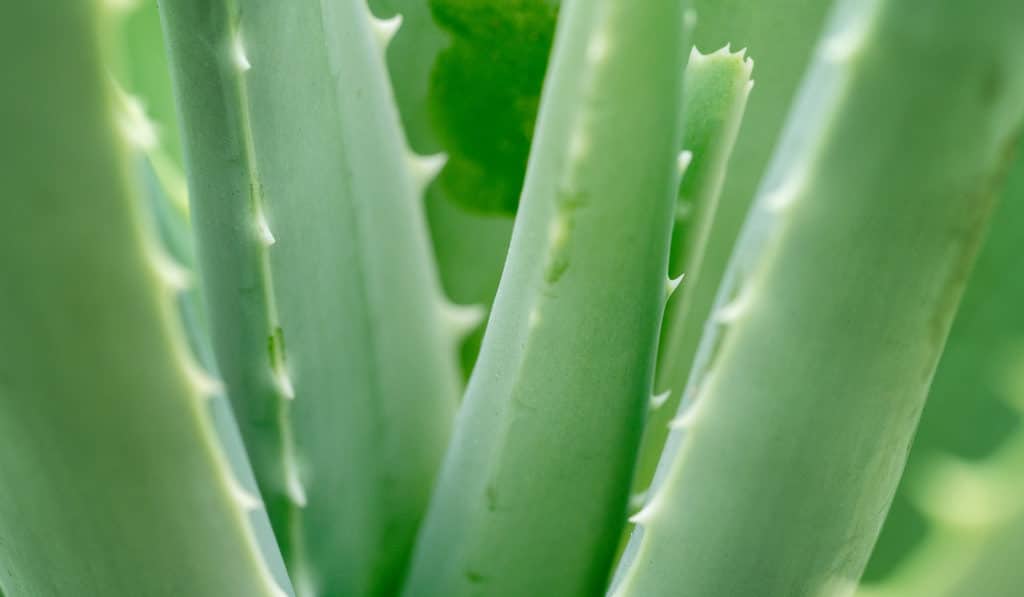
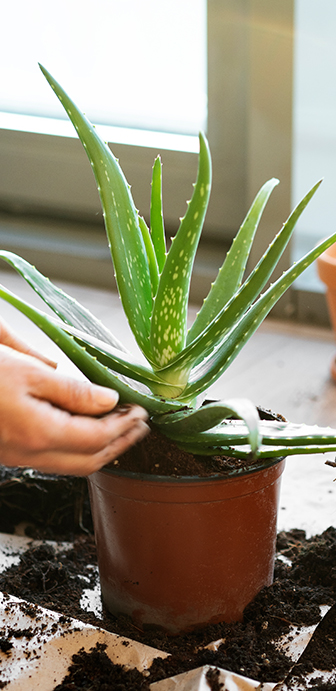
beyond the basics
-
soil & potting
Use a light, well-draining potting soil like Miracle-Gro Cactus, Palm and Succulent Potting Mix. Or, use regular potting soil and add some potting sand or perlite. A layer of sand on the top will help prevent rot. Ensure the pot has good drainage and aloe should never sit in water. Empty drainage trays if you see water collecting.
-
when to repot
Every 3-4 years in the spring. Especially when they’re small and growing. Increase pot diameter by 2 inches each time, and refresh the top few inches of soil. Growing too fast? You can slow the growth by trimming the roots.
-
propagation
Aloe self-propagates. It will make baby offshoots (also called ‘pups’). Leave pups on the main plant or, pot as a separate plant! Wait until the pup is at least 2” tall, then dig under the pup and find the roots at the base. Gently tug or trim the roots, they are key to the pup’s survival. You now have a new plant baby! See Soil + Potting above for planting instructions.
-
pest control
Aloe is prone to scale insects on the leaves. See our Pest control section in Plant 101 for how to identify and deal with pests on your plant!
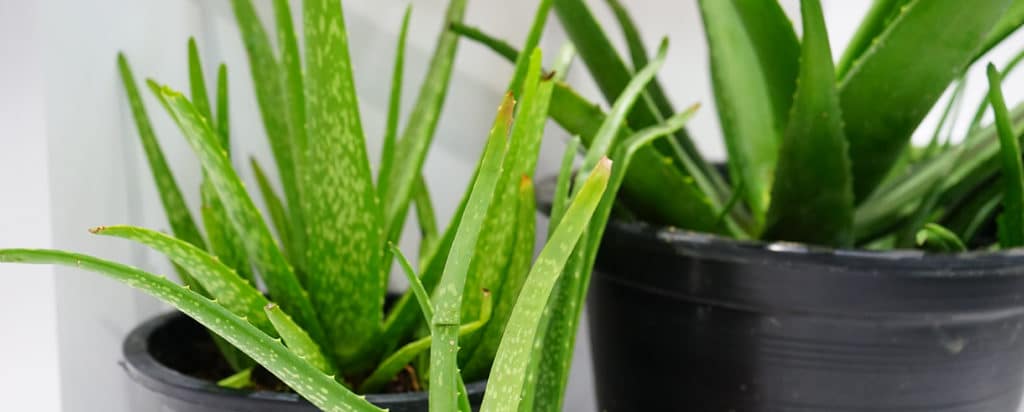
troubleshooting
-
leaves turning brown, red or reddish brown?
Variety of reasons. It could be too much summer sun, overwatering, or roots damage.
First, try moving your plant to a spot with less direct sunlight (but still bright). Reduce watering. If your little aloe buddy doesn’t recover check the roots for damage.
-
dark spots? brown or mushy leaves?
Probably overwatering. Caught early, this problem is easily corrected. Water at soil level and avoid spilling water on the leaves, cuz the pooling water can cause rot. Two inches of sand on top of the soil will help with drainage. Reduce watering and allow plant to dry out completely between watering. Ensure your pot has a drainage hole to let excess water out.
Other tricks: Poke holes in soil to get oxygen to the roots. Put a damp pot (with drainage holes) in a tray or dry soil, to suck up that extra moisture. Check the roots and remove any that have root rot. Consider repotting with new soil if things are a damp mess. For more information check out our Plant 101 section.
-
pale or yellowing leaves?
Overwatering or not enough light. Is the entire plant turning pale or yellow? It needs more light. Move to a brighter spot, watch out for soil dampness and avoid over watering.
-
shrunken, wrinkled leaves?
Your plant needs a drink. But don’t overdo it! Give it a small amount and also mist the leaves. Do this three days in a row. The leaves should rebound, getting nice and plump.
-
aloe not growing?
Not enough light. If your aloe isn’t growing, or the new growth is pale in colour, it’s crying out for more light. Most houseplants don’t like direct sun, but this desert-born baby likes it! A little direct sun every day is good, especially in darker winter months. Find a brighter spot and get growing.
